This July, participants across the globe will be doing what they can to further their sustainability and reduce their use of plastic, all in the name of Plastic Free July.
Hopefully, this blog comes to you as you’re saying goodbye to the classroom and getting ready for a well-deserved break!
If you know Teach Starter, you know that we are all about promoting sustainability and environmental awareness. We understand that your classroom won’t be at the forefront of your mind as you head towards the holidays, however we thought we’d use Plastic Free July to give you something to mull over as you prepare for next term!
Plastic Free July, an initiative of the Plastic Free Foundation, aims to reduce the amount of plastic waste in the world by raising awareness and challenging people to refuse single-use plastics.
In 2018, the Plastic Free July campaign had an amazing impact!
Last year, more than 122 million people participated in Plastic Free July and achieved the following:
- reduced their household waste on average by 76kg per household per year (7.6%)
- cut their use of recyclables (disposable packaging) on average by 28kg per household per year (5.6%)
- contributed to a total saving of 490 million kg of plastic waste in a year.
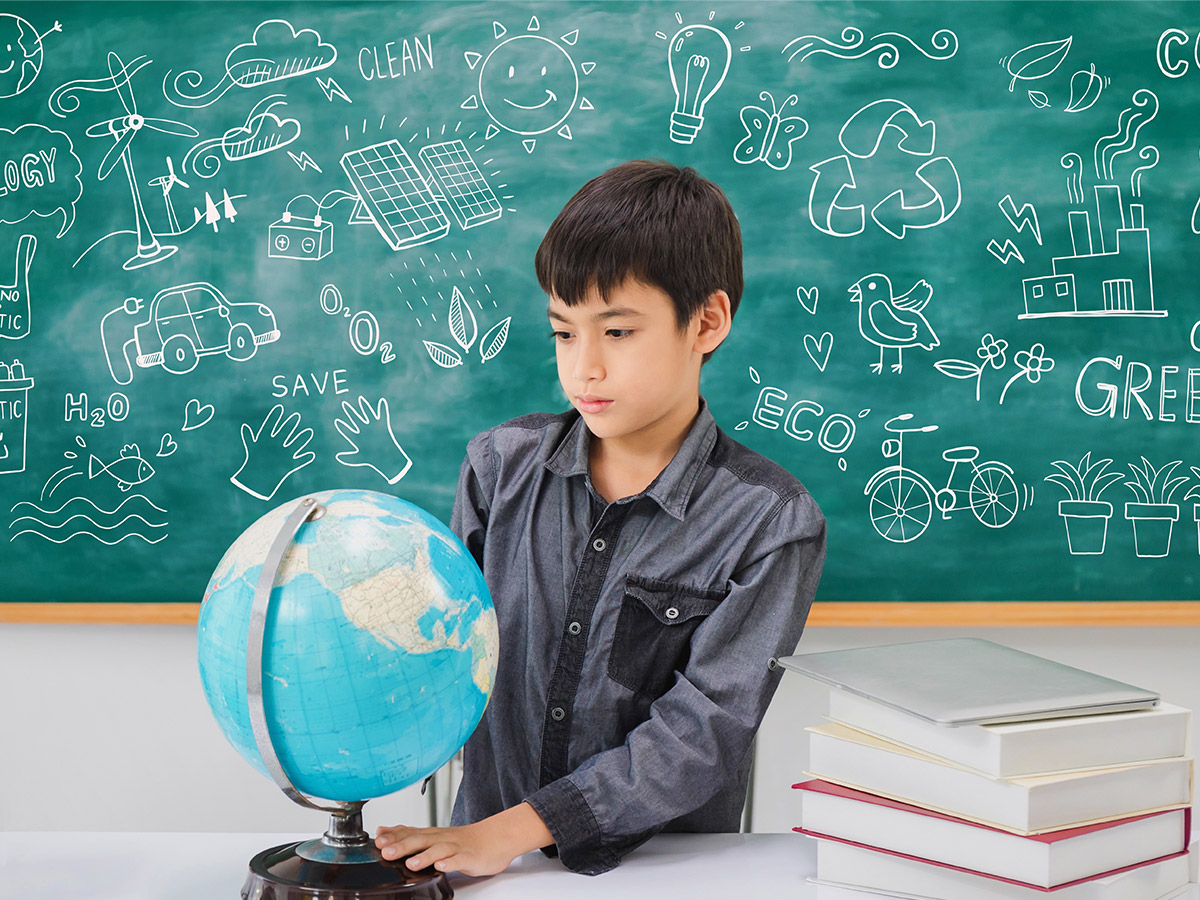
We know you’re going to be incredibly busy at the start of next term – you’re a teacher, after all! On top of curriculum, behaviour management and taking care of your own teacher wellbeing, driving sustainability in your classroom may be an afterthought!
We really think teaching the messages entwined with Plastic Free July are super important. So, to help you get sustainability integrated into your classroom without fuss or time, we’ve done the thinking for you!
Quick Tips for A Plastic Free July in Your Classroom
We’ve put together 7 quick classroom tips to minimise your plastic use that you can implement straight away in your classroom!
#1 Save on Laminating
Laminating takes up a lot of teacher’s time at the beginning of each term. And for good reason! You don’t want to be making displays and resources which are going to get tatty and torn and need to be re-done in ten weeks time. However, laminating pouches and their cut-offs are a great example of a plastic we can do without.
Why not back your wall displays with cardboard to help them be a little more hardy?
As you start to prep for next term, print items on thick card or back them on cardboard (we recycled a paper ream box for our Rainbow Watercolour Classroom Theme Pack cards!). This is a great way to ensure they stay strong. You may have to put it a little extra time cutting and pasting, but you’ll save time waiting for the laminating to feed through! For more practical ideas on sustainable alternatives to laminating, head to our podcast!
If you have printed a wonderful poster for your classroom, why not frame it? This is another great way to save on laminating, especially when it’s a larger item. When a poster is nice enough, you want to keep it for years to come. Grab a cheap frame and place it on top of a bookshelf or hanging it on a wall in your room! Why not download one of many amazing posters in our Positivity Resource Collection.
#2 Construction and Craft Materials
Construction and craft don’t have to be driven by plastic. Your students will have just as much fun without those bendy straws! Teachers are already really savvy when it comes to reusing and recycling in the name of craft, but there’s always more you can do!
Try toothpicks, paddlepop sticks and wooden skewers instead of straws – these make fantastic for construction materials without a shred of plastic!

Making simple swaps in your craft cupboard will have a big impact on the planet in the long run.
Give one of these swaps a try:
- moulding clay (which can be collected and re-used) instead of sticky tape
- scrap paper and broken up cardboard boxes from materials brought from home instead of fresh sheets (check for health and safety first!)
- alfoil instead of cellophane – alfoil, when collected in a sizeable ball (think the size of your fist) can get chucked into the recycling bin with the paper!
#3 Storing Art Resources
Art is one of those tricky areas – you can try all you might to mitigate the environmental impact with the resources you choose to use, but sometimes you just can’t avoid creating waste.
But don’t despair – a few simple tricks with how you store resources, such as paint, can make all the difference!
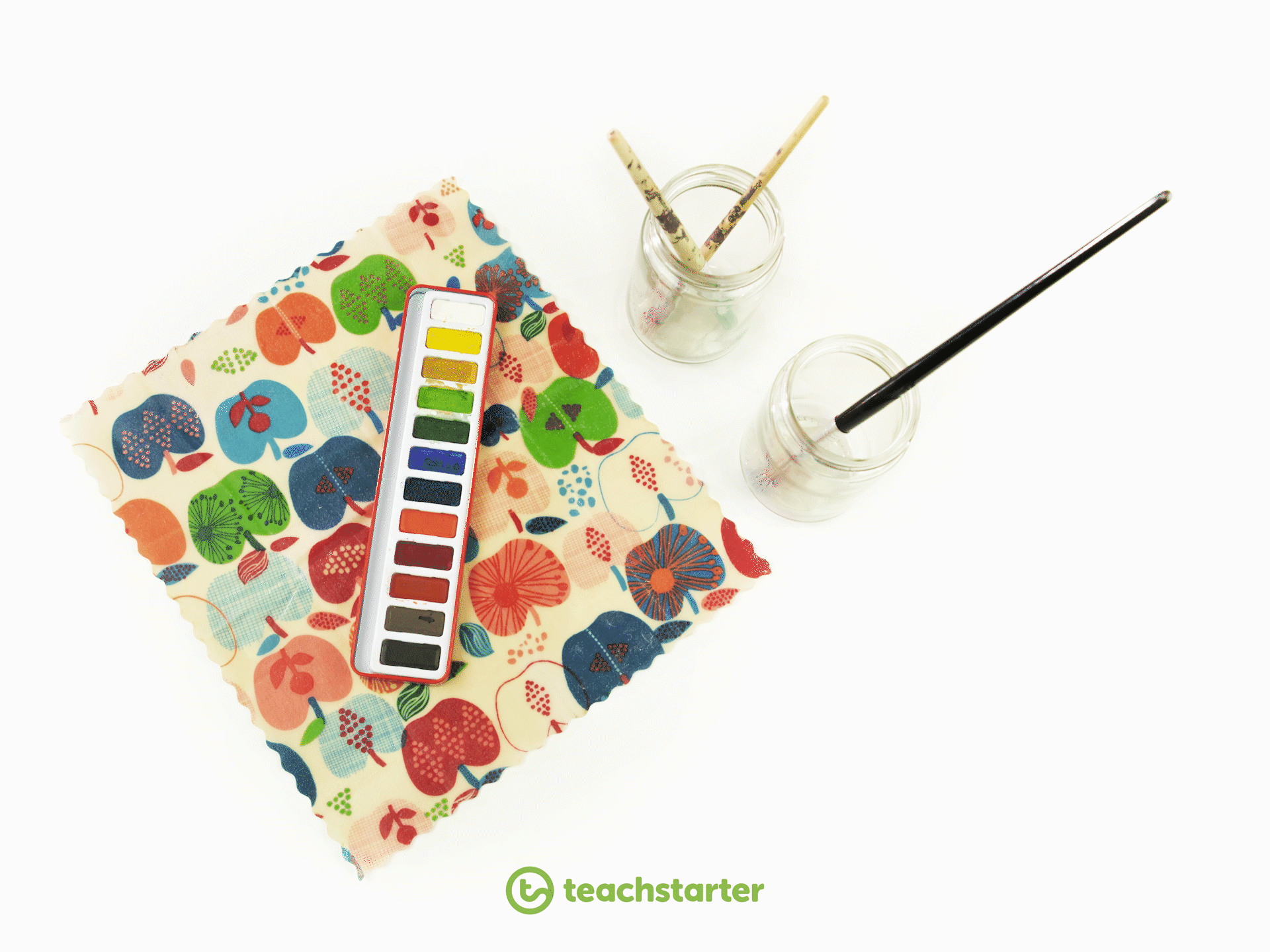 Swapping plastic wrap for beeswax wraps can save your paints AND the environment! These nifty kitchen accessories are useful for more than just the kitchen!
Swapping plastic wrap for beeswax wraps can save your paints AND the environment! These nifty kitchen accessories are useful for more than just the kitchen!
If you’re already being a bit savvy and buying your paint in bulk bottles, save on plastic pots and use jars to pour paint into as you need it. This way, your students can easily see how much they have left, and you can close it with an airtight lid when you’re done. Repurpose jars from home, or get your class to bring a jar each – washed, of course!
#4 Think About Stationery
Just think about the staggering TONNES of stationery that gets used up by a single student in a school year (seriously…it’s out of this world). It’s easy to see how making a few small swaps with stationery can make a great difference!
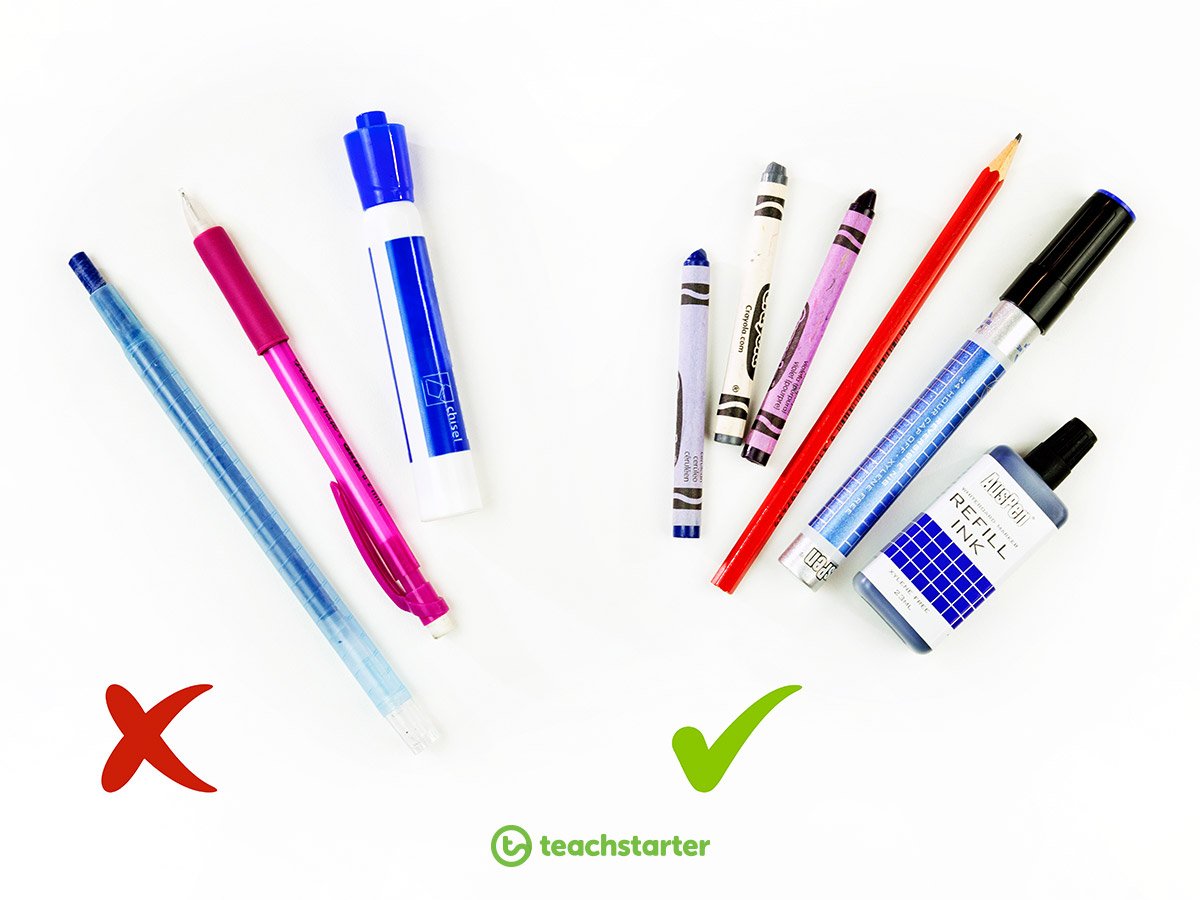
Encourage your students to use their stationery wisely. Don’t sharpen unless you need to!
Mechanical pencils, or ‘pacers’, are fancy – but they are just plastic shell for regular old lead. What’s so bad about wooden pencils? They’re much better for the environment. You can even get ones that you can plant once you’re done and they’ll grow a tree! In the past, we’ve partnered with Sprout Pencils.
Make the swap from wind-up crayons to the old-fashioned kind with a paper wrapper – these ones are also less inclined to snap off or cause distraction!
#5 Reduce Lunchtime Plastic
Meal times at school are one of the worst culprits when it comes to the use of single-use plastic. While you can’t control all your student’s lunches, you can make sure you are being a good role model when it comes to your own meal breaks!
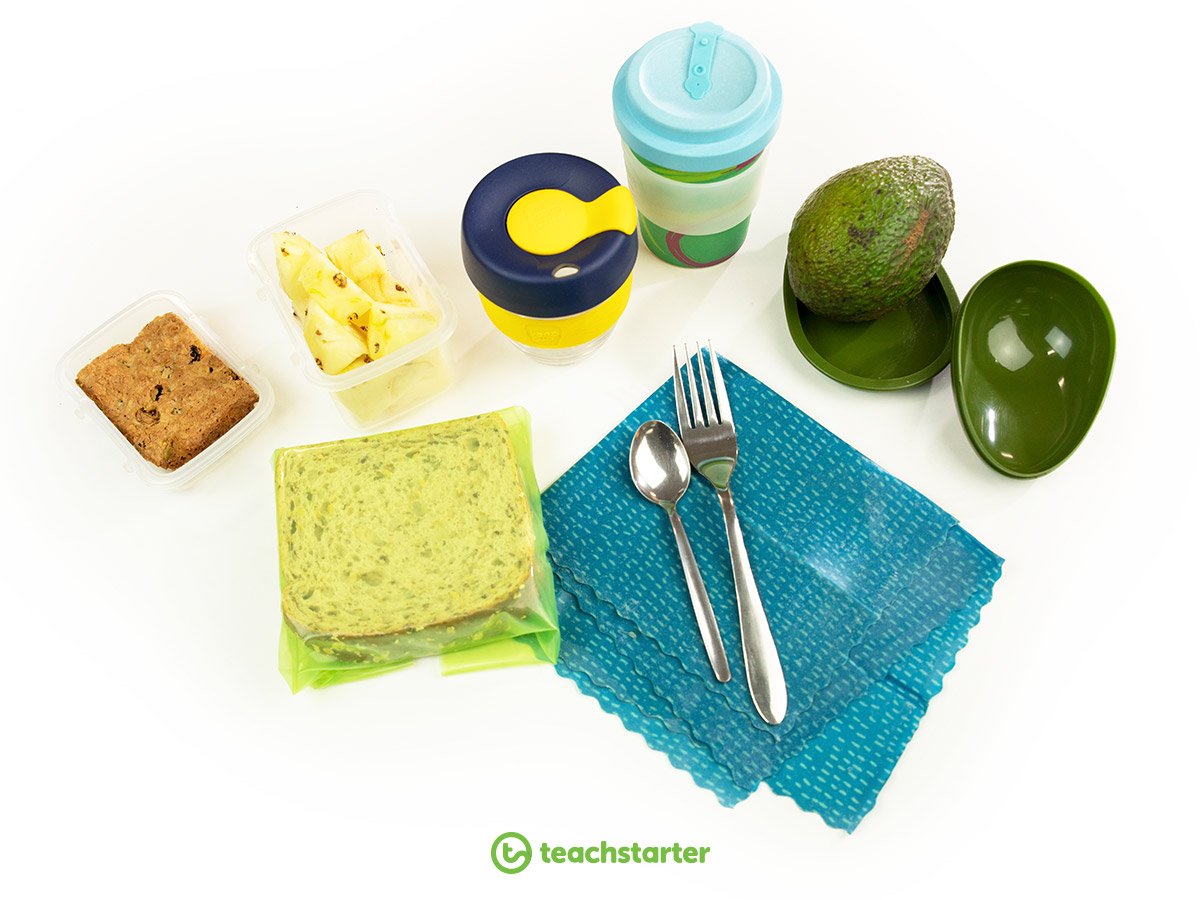
Here are some quick tips to get you sustainable savvy at lunchtime:
- Use a keep cup for your morning coffee, or make sure you carry a mug with you every time you go to the staff room for you much-needed cups of tea!
- Use silicone or beeswax wraps for your lunch items, such as sandwiches and crackers.
- Bake at home and put a treat into a reusable plastic container. Better yet, buy some glass ones to further save the planet!
- Store leftovers in purpose-built containers, rather than wrapping them in plastic.
- If you’re going to the canteen or tuckshop for lunch, pop in in the morning and give the tuckshop workers and volunteers a reusable container for your order- you’ll save them stock and be doing the environment a favour!
#6 Swap Your Soap
You know hygiene is imperative in a primary classroom!
Don’t throw out your soap pump every week, invest in a bar of soap!
Bars of soap are proven to last longer than liquid soaps, and can come in just as many wonderful colours and fragrances! Bars of soap also often contain glycerin which is beneficial to those who have dry skin.
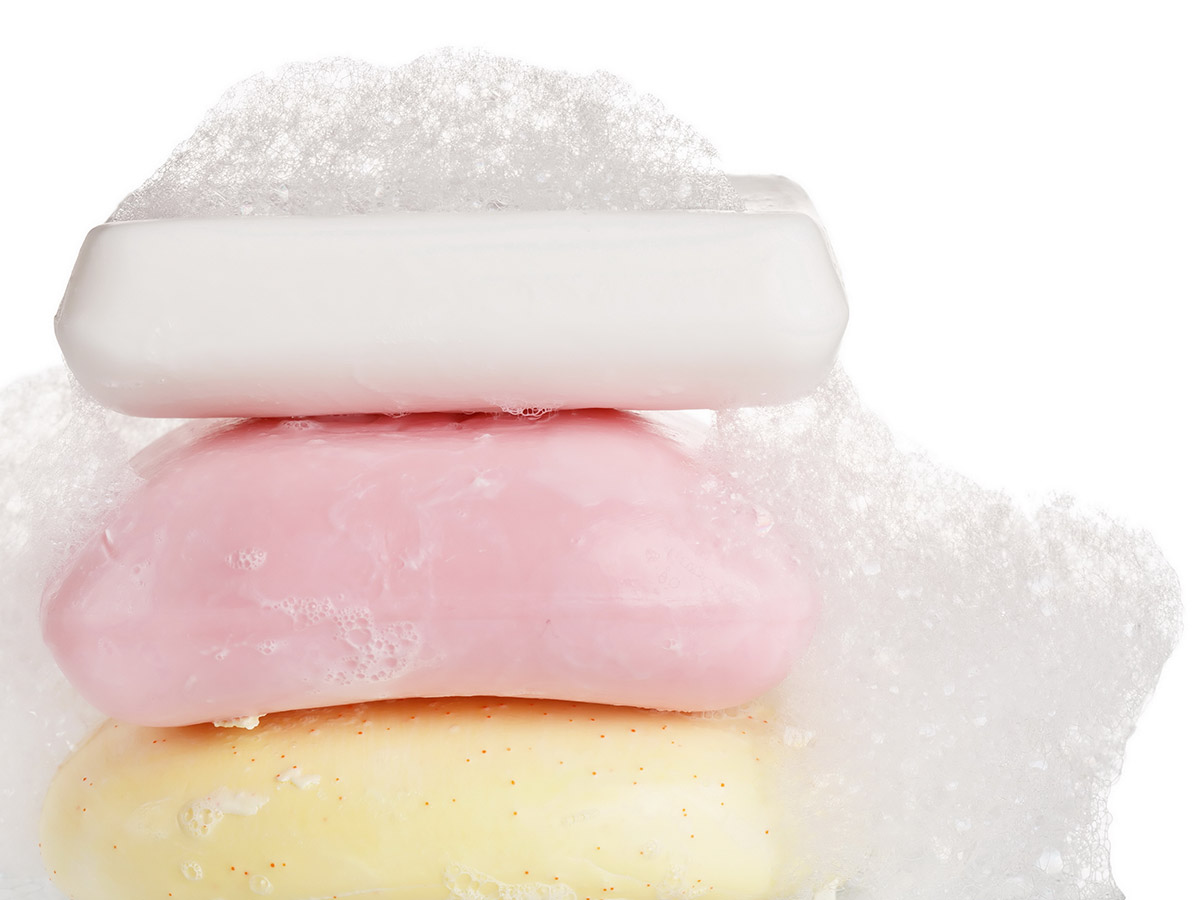
If you want to swap even more of your cleaning products to use less plastic, why not keep your old spray and wipe container and re-fill it with a homemade recipe?
Bron has written up some amazing tips on cleaning your classroom in a sustainably savvy way in her blog Environmentally Friendly Ways to Clean Your Classroom.
#7 Complete a Plastic Audit
If you want to maintain Plastic Free July and make it a plastic-free year, you need to get your class on board!
Completing a simple plastic audit is the first step to making your students aware of the amount of plastic they generate in a week. Ask your students to bring their plastics to class at the end of every lunch break and take a tally of the number of items that would have otherwise gone into the trash.
Once your class sees the sheer volume of plastic they produce, educate them on sustainability with the Sustaining Our World Unit Plan. They’ll be quick to jump on the plastic-free bandwagon when they can see all the damage that single-use plastics do to the environment!
Brainstorm further ways to reduce plastic in your classroom, and start being sustainability superheroes with your class!
Why restrict it just to July?
There’s no better time than the present to start thinking about how you can turn next term into a plastic-free one!


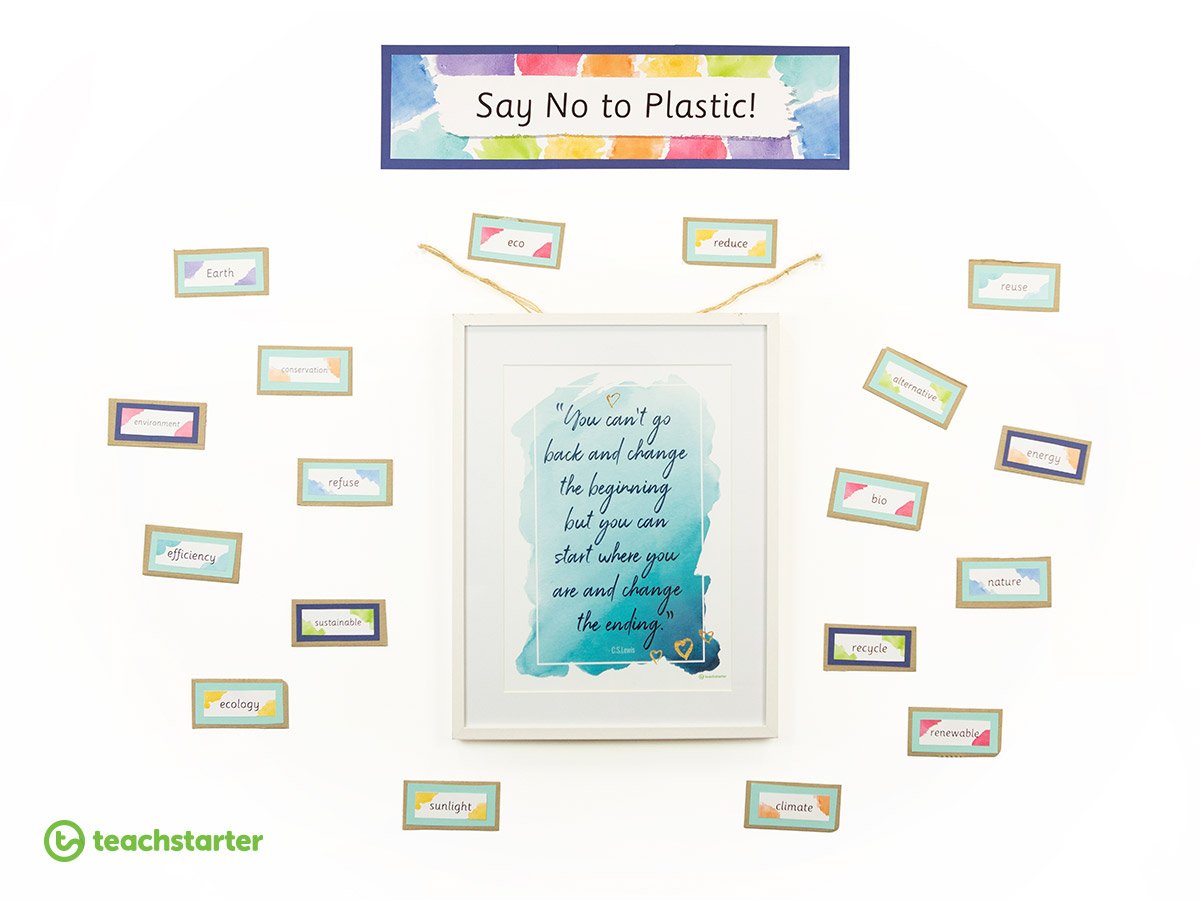
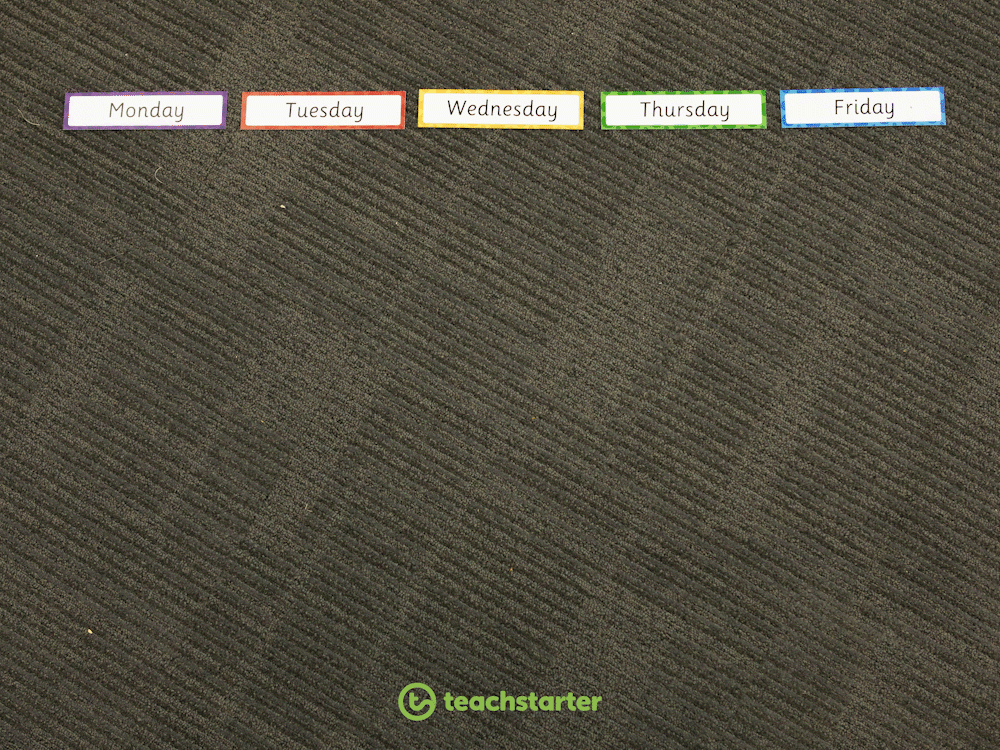






The children in Pr6 at Macduff and the children in Enhanced Provision at Banff primary made this animation about marine plastic pollution. It stars the Broons, Scotland’s most famous family and has some surprising guest appearances. The narration and text is in the doric, the newly acknowledged language of the NE of Scotland. Popcorn is recommended so sit back, feet up and find out some alternatives to plastic. https://youtu.be/I-LqcJC9458
Thanks for your share Dorothy! It's so great to see kids being educated about plastic pollution. Kind regards, Emma